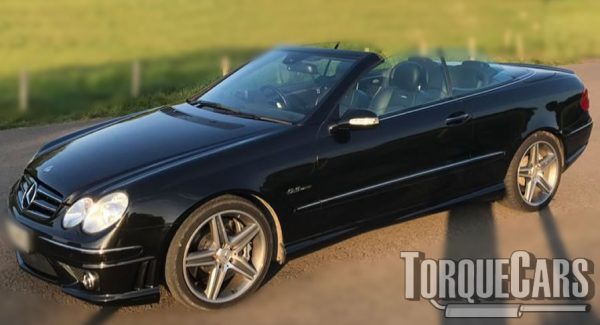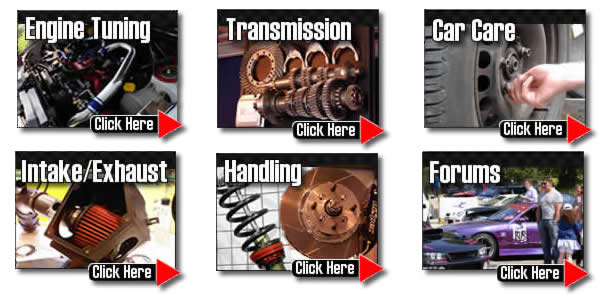Mercedes Benz CLK Tuning
"Thank you for reading my CLK tuning guide."
Released in 1997 to 2003 we saw the W208/C208 version, the W209 appeared in 2002. Fitted with high end E Class components the CLK was actually based on the W202 platform.
It gave birth also to the CLK GTR one of my personal favourites from the motorsport world.
It was used in formula 1 as a safely car in 1997.
A C209 A208 version hit the streets in 2002-2009 and offered both hard and soft top coupe versions. By 2010 the replacement was the C207 actually an E Class coupe and A207 E Class Convertible where you'll find tuning tips for these models on our site.

A popular car for tuning up is the CLK and our members have some interesting projects on the go. If you do your research then you can create an awesome CLK but don't be fooled there are lots of motorsport kits out there that will simply not suit it read our unbiased guides first.

Improving the handling for many people first priority in your CLK tuning project. Drop the car by as much as 35mm and fit motorsport grade stiffer dampers, bigger drops will need other modifications in most instances.
Turning our attention to the CLKs engine we need to get a bit more power out of the top end.
Sadly with smaller engine sizes you are wasting your time spending money on modifications, so if this applies to you get yourself an engine swap then apply the following mods.
Engine Tuning.
These mods sports upgrades are usually fitted by our members, decide how far you want to push your car before you get going.
Here are the engines offered on the CLK range.
- CLK200 2.0
16V I4 136 PS (100 kW; 134 bhp) 190 N⋅m (140 lbf⋅ft) - CLK200 Kompressor
2.0 16V supercharged I4 163 PS (120 kW; 161 bhp) 230 N⋅m (170 lbf⋅ft)
2.0 16V supercharged I4 193 PS (142 kW; 190 bhp) 280 N⋅m (207 lbf⋅ft) - CLK230 Kompressor
2.3 16V supercharged I4 197 PS (145 kW; 194 bhp) 280 N⋅m (207 lbf⋅ft) - CLK320
3.2 18V V6 224 PS (165 kW; 221 bhp) 315 N⋅m (232 lb⋅ft) - CLK430
4.3 24V V8 279 PS (205 kW; 275 bhp) 400 N⋅m (295 lbf⋅ft) - CLK55 AMG
5.4 24V V8 347 PS (255 kW; 342 bhp) 510 N⋅m (376 lbf⋅ft)
Getting the right modified modifications for your planned usage of the car is a time and money saver. Stage 3 competition upgrades just won't work well on the road difficult in stop start traffic.
Please watch our introduction Video tutorial to car tuning. Be sure to subscribe and support our new channel.
How to tune your car
- Improve the handling
Focus on Suspension improvements, such as coilovers and make sure the bushings are in good order and that the alignment is correct. Then focus on improving the brakes, with a big disk brake conversion kit and fast road brake pads.
- Remove restrictions
Focus on the intake and exhaust with filters being the common point of restriction in a tuned car. Intercoolers may also become restrictive on turbo engines so this may also need to be uprated.
- Burn more fuel & air
Increase the fuelling so it matches the air coming into the engine. The ratio is important so you need to improve the fuel pump and injectors, so the head mods, big valve conversions, fast road camshafts and forced induction upgrades extra supply of air is adequately met.
- Test and replace any weak parts
Weak areas are commonly the clutch, the turbocharger and pistons and crankshaft in a highly tuned engine. Makes sure these components will cope with your power aspirations.
- The Tune or Remap
A cars ECU controls the fuel, timing, spark and even the turbo in some cases, so to fully extract your gains you should remap the car last and this will fully release the power. Some cars are easy to map, and others require piggyback ECU's or aftermarket ECU's but this is the most vital step of your tuning project.
Modifying to Stage 1:
Lighter flywheel, Suspension upgrade (drop 30-40mm), Alloy wheels, Panel air filter, Sports exhaust, Remap.
Modifying to Stage 2:
Fast road cam, Power/Sport clutch, Ported and polished head, high flow fuel injector, fuel pump upgrades.
Modifying to Stage 3:
Adding or upgrading forced induction (turbo/supercharger), Competition cam, Engine balancing, Sports gearbox, Internal engine upgrades (pistons/head/valves).
You should keep as much low end torque as possible and aim to achieve a long power band across the rev range rather than a narrow top end power hike.
In this article we shall give a little insight into the world to the best upgrades for your car, but we'd encourage you to spend some time on the site looking into the details of each type of performance modification.One of the best mechanical motorsport mods you can do on your NASP engine is to fit a fast road cam .
The intake and exhaust flow play a large part in your cars power band, but be careful here, getting this wrong can upset the idle and make the car hard to drive in traffic. You'd need to follow a cam upgrade with other mods and finish with a performance chip to fully realise your gains.You will need to ensure that the engine is not starved of fuel so will need to ramp up the fuelling.
If you find you suffer from flat spots and power surges after your uprated mods you should check the fuelling and try a higher octane fuel as well. Uprated injectors will enable you to supply sufficient fuel to the engine. If have increased your fuelling with bigger injectors you will also need to get a bigger fuel pump to supply it.
Intake and Exhaust Tuning.
Breathing mods are usually next up. Contrary to popular belief there is usually a small power gain to be had by fitting an induction kit, they only work well and are recommended after you increase the engines power to the point where the standard air intake box cannot cope! Induction kits can work well on turbo engines and larger engines (if supplied with a suitable cold air feed or air box), generally though we'd just recommend for CLK engines you should go with a performance panel air filter preferably made from cotton.
Sports exhausts will certainly help air flow from the engine but avoid an exhaust that is too wide or you may end up will reduce the flow rate. Stick to 1.5 to 2.5 inches for best results.
Airflow through the head can be dramatically increased with some professional flowed (porting and polishing). These should match and be setup to take into account any other engine mods. A good triple plate fast road upgraded clutch will help to keep that power going where it should. Never make false economies or expect a standard clutch to cope. Remaps offer large power gains on all turbo charged cars. On NASP engines the benefits are doubtful. However a remap on a NASP engine will help unleash the potential if you have done a lot of mods. The most phenomenal power gains for NASP engines usually involve the addition of forced induction. Turbos are usually harder to add than a supercharger. Turbos increase power in exponential proportion to th engine speed and this can make mapping difficult.
The nice steady boost and rpm characteristics of the supercharger make them more straighforward to map. Alternatively you could perhaps add water injection to cut down knock.
Alloy wheel upgrades.
Alloy wheels will help the brakes cool down and are generally less heavy than steel ones. Please note that although they can look cool on the CLK large alloys will actually decrease your performance. The larger you go the lower your acceleration will be - this to the change in your effective final drive ratio.
Due to this aim to keep the overall rolling diameter of the wheel the OEM setup. In all cases without going over 16 inches.
For more information on Tuning your car please join us in our friendly forum where you can discuss CLK options in more detail with our CLK owners. It would also be worth reading our unbiased Mercedes Benz tuning articles to get a full grasp of the benefits and drawbacks of each modification.
Please help us improve these tips by sending us your feedback in the comments box below. We love to hear what our visitors have got up to and which mods work best for them on each model of car. Comments are used to improve the accuracy of these articles which are continually updated.
If you liked this page please share it with your friends, drop a link to it in your favourite forum or use the bookmarking options to save it to your social media profile.
Check out TorqueCars new YouTube channel, and see their awesome new content...
Feedback
Please use our forums if you wish to ask a tuning question, and please note we do not sell parts or services, we are just an online magazine.
Help us improve, leave a suggestion or tip
